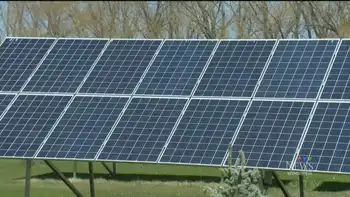Tax refund helps OPG to profit
TORONTO, ONTARIO - Pre-tax profit at Ontario Power Generation Inc. dropped by $120 million in 2004, excluding extraordinary items, but the company says it's set to do much better in years to come.
The good news, bad news results for OPG were a step ahead from most recent years, when there has only been bad news.
"The company is in better shape and has a good platform," acting chief executive Richard Dicerni said in a recent interview after OPG reported net income of $42 million on revenue of $6.072 billion — up from a loss of $491 million a year earlier on revenue of $6.688 billion.
The 2003 loss resulted mostly from OPG writing off the value of its coal-burning generating stations, which Ontario's Liberal government says it will close by 2007.
Unhampered by such a massive write-off in 2004, OPG eked out a profit thanks to an $80 million tax recovery.
Without the tax refund, OPG would have lost $38 million last year; before taxes and without the coal plant write-off in 2003, OPG would have shown a profit of $82 million.
So why does Dicerni see better times ahead?
For years, OPG has blamed its money-losing ways on a requirement imposed by the province that it must rebate to customers much of the revenue it receives whenever the price exceeds 3.8 cents a kilowatt hour. That refund totalled $1.154 billion in 2004.
The rules change April 1, however. The trigger point for the rebates, on average, will rise to about 4.7 cents a kilowatt hour.
The higher ceiling price gives OPG the potential to earn an extra $300 million to $350 million a year, Dicerni said.
Energy minister Dwight Duncan, who was harshly critical of OPG when the Liberals came to power in 2003, bestowed some faint praise on the results.
"We have begun the process of making this a healthy company again, and we've still got a long way to go," Duncan said.
"We're making money again and those results will improve in the year ahead. The full impact of the positive changes we've made will begin to be felt in this fiscal year."
But for 2004, Dicerni said, OPG had to contend with lower electricity prices and the high rebates.
Including the rebate, the price OPG got from the spot market dropped to 4.2 cents a kilowatt hour from 4.4 cents. OPG also sold about 4 per cent less electricity last year.
Production increased at nuclear and hydro-electric plants, but plunged by nearly one-third at OPG's fossil-fuel plants. Nanticoke, the biggest coal plant, performed especially badly with frequent breakdowns.
While sales declined, OPG's operating and administrative costs rose in 2004, with pension and retirement expenses rising $137 million, while nuclear maintenance costs jumped by $111 million.
Tom Adams, executive director of Energy Probe, said the rising costs continue a worrying trend. OPG's operations, maintenance and administration costs rose 13 per cent last year, to $2.594 billion from $2.393 billion, while output declined nearly 4 per cent.
Costs have been trending higher and output lower since 2000, Adams noted in an interview:
"On that measure, OPG's got a big problem. Indications are this trend isn't going to turn around."
Dicerni argued that OPG got a good payback on some of its higher costs. Because of the increased spending on maintenance, the nuclear output increased about 15 per cent and boosted revenue from the plants by $220 million, he said.
One future trouble spot for OPG is the Lennox generating station, which burns oil and natural gas, and has the highest operating costs of OPG's generators. Lennox can't possibly cover its costs in today's electricity market, OPG says, and it's talking to the province about making special arrangements for it.
If OPG can't cut a special deal for Lennox, then it will have to write off the plant's value of $205 million.
Despite the mixed results, Dicerni said 2004 was a "good transition year" for OPG.
The company has better control of its costs, has boosted nuclear output, has improved its governance with a permanent board of directors and is working to improve relations with its workers, regulators and the public, Dicerni said.
"The company has achieved a momentum. We have definitely stopped taking on water, and there is a certain path forward."
One test for OPG will be bringing the next unit of the Pickering A nuclear station back into service, an undertaking estimated to cost around $1 billion.
Related News

New England takes key step to 1.2 GW of Quebec hydro as Maine approves transmission line
BANGOR - The Maine DEP reviewed the Clean Energy Connect project for more than two years, before issuing permits that included additional environmental mitigation elements.
"Collectively, the requirements of the permit require an unprecedented level of environmental protection and compensatory land conservation for the construction of a transmission line in the state of Maine," DEP said in a May 11 statement.
Requirements include limits on transmission corridor width, forest preservation, culvert replacement and vegetation management projects.
"In our original proposal we worked hard to develop a project that provided robust mitigation measures to protect the environment," NECEC Transmission CEO Thorn Dickinson said in…




